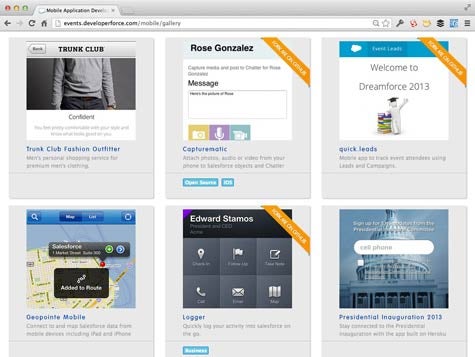IT organizations are often under pressure to develop mobile applications as quickly as possible. Developing those applications is one thing, but actually giving them access to relevant corporate data is usually what takes the most time. As part of an effort to accelerate that process, Salesforce.com is making the case for using its customer relationship management (CRM) application in the cloud as the foundation for building mobile applications for the enterprise.
According to Adam Seligman, vice president of developer relations for the Salesforce platform, most of the mobile applications that IT organizations are being asked to develop involve customer data. Rather than replicating that data inside a new platform, Seligman says it’s more efficient to leverage the data that already resides in Salesforce.com to drive the mobile application.
To make it easier, Salesforce.com added a suite of mobile design templates and a gallery of customizable mobile computing applications to its Salesforce Platform Mobile Services offering that will work both online and offline.
Seligman says Salesforce.com wants its core CRM application to be seen as a cloud platform for building both mobile and Web applications. Not only can corporate developers access data that resides inside the Salesforce.com application, through Salesforce.com they can access corporate data that resides in any application with which Salesforce.com is integrated.
As part of that effort Salesforce.com has made available the identity management functions within Salesforce.com into a service that the company expects will become a foundation for managing workflow across the cloud.
The end result, says Seligman, is the ability to develop mobile applications using JavaScript and HTML5 in a couple of days versus the months that IT organizations usually take to create apps using other mobile application development tools.
Over the years, Salesforce.com has successfully blurred the line between power users and application developers. Using declarative language capabilities built into the application, Salesforce.com has significantly expanded the base of people that can actually develop mobile applications. Seligman says that by turning that base of power users and developers loose on mobile applications, IT organizations can dramatically increase the rate of mobile application development.
Business users are clamoring for mobile computing applications that can increase productivity by giving them access to the data they need to make decisions wherever they are. No matter how you look at it, the business that is capable of making and executing more decisions per day than their rival is going to have a significant competitive edge. It’s the job of the IT organization to figure out how to best provide this capability.




